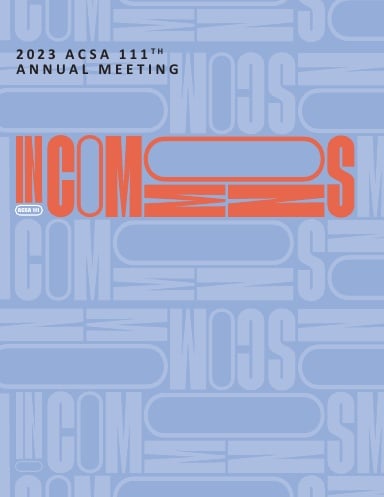Author(s): Lindsey Krug
Following World War II, as America grappled with the cultural revolution of the 1950s and 60s and defining its identity domestically and on the world stage, a core tenet of American life bubbled to the surface of political, social, and aesthetic discourse: privacy. Once the revelry of the Allies’ win in the World War cooled into the precarity of the Cold War, American democracy and the culture it afforded its citizens were positioned and advertised, first and foremost, in opposition to the totalitarian government and culture of the Soviet Union. In her book Pursuing Privacy in Cold War America (2002), American literature scholar Deborah Nelson attributes the eulogizing of privacy that emerged in Cold War America to heightened national security discourse and the accompanying fear of the Eastern Bloc.1 The trajectory of American life would be forever shaped by this discourse, and nowhere is its lasting influence more evident than in two layers of American infrastructure: law and the built environment. Conceptually, privacy presents a straightforward notion, so much so that it’s often defined and understood in a binary condition: that which is not public. However, the public versus private dichotomy quickly dissolves when presented in legal and architectural contexts. Perhaps surprisingly, the word privacy does not appear in the United States Constitution and, thus, has not always been a guar-anteed, fundamental right. Privacy was first acknowledged as a right bestowed in America’s founding documents in the U.S. Supreme Court (SCOTUS) case of Griswold v. Connecticut (1965). This case granted married couples the right to use contraception on the grounds that this was within the confines of their private lives and not to be meddled with by the government. Justice William Douglas wrote for the Court’s majority: “Specific guarantees in the Bill of Rights have penumbras, formed by emanations from those guarantees that help give them life and substance. Various guarantees create zones of privacy.”2 Exceedingly spatial in this description, these shadowy zones of implied privacy rights can be located in the First, Third, Fourth, Ninth, or Fourteenth Amendments, or some combination therein, depending on constitutional interpretation. In the discipline of architecture, where we construct and delineate private and public spaces, it’s worth mapping the evolution of legal privacy with the evolution of private space. Where do these zones of privacy exist spatially, and how are they occupied? How can we begin to characterize the role of architecture, past and present, as good or bad, antagonistic or protective, and as an active player in this discourse? Using digital modeling and imaging tools, Corpus Comunis assembles and excavates material from a lineage of seven Supreme Court cases from 1965 to 2022 to establish a cohesive visual language through which we can speculate on how law and architecture together have, and may continue to, define the extents of our private, interior lives.
https://doi.org/10.35483/ACSA.AM.111.57
Volume Editors
ISBN
978-1-944214-41-8

 Study Architecture
Study Architecture  ProPEL
ProPEL 
